FIRST LIGHT RESORTS
First Light Resorts provides visitors with three remarkable lodging options that are each ideal for exploring Yosemite National Park: Evergreen Lodge, Rush Creek Lodge and now Firefall Ranch. Each lodge serves as a ‘destination within a destination’ and brings its own distinctive style to amenities such as restaurants, taverns, general stores, heated saltwater pools & hot tubs, daily activities, and professionally guided excursions, with no hidden resort fees.
Those seeking sustainable travel options are happy to learn that all three lodges meet rigorous standards of social and environmental performance, operating and fully self-funding a behind-the-scenes Youth Program, comprehensive water conservation systems that repurpose nearly 100% of water onsite, and a host of additional stewardship efforts.
EVERGREEN LODGE
Evergreen Lodge is a newly expanded historic resort with 88 cozy cabins in the woods and 22 custom camping sites. Guests say Evergreen feels like a big warm hug. It was established in 1921 to facilitate the building of the O’Shaughnessy Dam in Yosemite’s Hetch Hetchy Valley. Today you can tap into the historic vibe of Evergreen’s colorful past, while still enjoying the comforts of a modern resort.
Evergreen is blessed with a convenient location for enjoying all of Yosemite. The lodge sits one mile from the Park's western border and the entrance to Hetch Hetchy.
Evergreen was acquired by Lee Zimmerman and Brian Anderluh in 2001, modernized and expanded over the years and became a founding B Corporation in 2007.
RUSH CREEK LODGE & SPA
Rush Creek Lodge & Spa, which opened in 2016, is built on a historic property fondly known as a Gold Rush claim that just didn’t pan out! Like Evergreen, Rush Creek served as a social hub throughout the Gold Rush era, and is pleased to provide a warm welcome to modern day travelers seeking to bask in Yosemite’s warm glow.
With 143 Lodge Rooms, Suites and Villas situated on 20 hillside acres, and a gorgeous Yosemite-inspired Spa, the Lodge’s mood is laid-back luxury. Located less than a mile from Yosemite’s Hwy 120 West entrance, Rush Creek is a favorite for easiest access to Yosemite.
Rush Creek is privately owned and lovingly operated by Lee Zimmerman and Brian Anderluh, and is a Certified B Corporation.
FIREFALL RANCH
With its 2024 Grand Opening, Firefall Ranch proudly joins its long-established sister properties. While brand new, Firefall has historic Yosemite roots, as the Ranch once served as a stop on the original stagecoach route to the Park in the 1870’s.
Firefall sits on 300 sprawling acres of meadowland and Sierra foothills along Yosemite’s Hwy 120 West corridor. With 55 standalone Cottages and Villas spread throughout the property, there is plenty of space for guests to enjoy an elegant, private getaway in pristine natural surroundings.
Firefall was built by long-time local contractor Robert E. Boyer Construction and is owned by the Boyer & Oliva Families in partnership with the Chicken Ranch Rancheria of Me-Wuk Indians of California.
OUR PHILOSOPHY
Our ties to the Yosemite area reach back to 2001, when we purchased Evergreen Lodge as a means to self-fund a Youth Program teaching job and life skills to under-served Bay Area youth. We were thrilled to be able to expand our Youth Program, environmental mission, and meaningful approach to hospitality to Rush Creek and to our newest property, Firefall Ranch.
Over the years, we have worked hard to be deserving of praise from a variety of well-respected travel authorities. We’ve earned the TripAdvisor Certificate of Excellence and Lonely Planet’s Top Choice award, and we are Recommended by Fodor’s, a Frommer’s Favorite and a Sunset Magazine “hidden gem.” We’re looking forward to more of the same at Firefall.
We feel lucky to be stewards of such special places, and we are committed to making sure our properties continue to create lasting memories for generations to come. We love being in the “make people happy” business, and we are proud and excited to offer all-around lodging and guest experiences that are unparalleled in the Yosemite area.
Our goal is to provide gracious and friendly service, quality products, private and communal settings, and a huge array of opportunities for you to enjoy your time with us and to explore the Yosemite area.
Simply stated, we want you to be blown away by your experience with us and to not want to leave. We hope you will return and become a regular part of the Evergreen, Rush Creek and Firefall traditions and family. And if you can’t come back, we want your time with us to always be remembered warmly.
We look forward to seeing you here, and we hope that our lodges brings you as much joy and pleasure as they do us.
Regards,
Lee Zimmerman and Brian Anderluh



